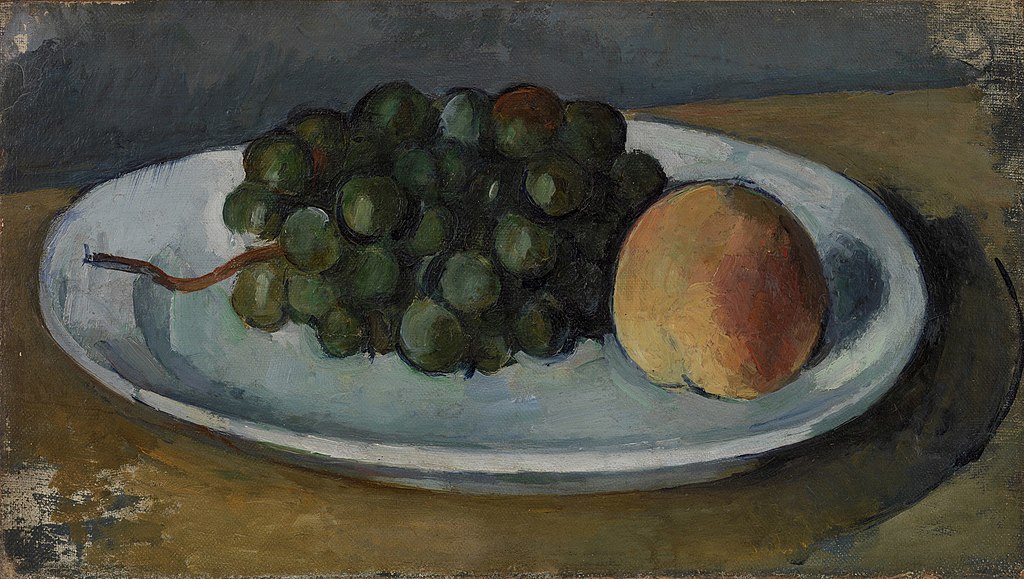One of the highlights of a recent week in Philadelphia was visiting the Barnes Foundation, a world-class collection of Impressionist, Post-Impressionist, and Modernist paintings.
Established by Dr. Albert C. Barnes in 1922, the foundation’s quantity and quality of work is way too much to take in on a single visit, or even a hundred visits.
Barnes was crazy for Renoir and over the course of his life snapped up a whopping 181 paintings of gauzy children, rosy-cheeked maidens in picture hats, and charming gardens.
Of far more interest to me were the Cézannes, van Goghs, Picassos, and Soutines. I’d prepared by reading biographies of each of those painters.
I’d also read “The Maverick’s Museum: Albert Barnes and His American Dream” by Blake Gopnik (HarperCollins, $28), and so I knew something of the history and highlights of the collection, as well as the way the unique works are grouped: without captions, and in carefully curated “ensembles” that “create dialogues between the works.”
I’d also learned about Barnes, a mercurial figure who alienated just about everyone he ever met. He was rude, crass, and an insufferable blowhard. He also, in his way, championed the black community, women, artists outside the mainstream, and the working class.
Most notably for the world at large, he amassed a private art collection, today valued at around $25 billion, that has been seen by more than 2.3 million visitors since 2012.
Barnes was born and came up in the working-class Philly neighborhood of Kensington: street-fighting, scrapping, and developing a chip on his shoulder that his whole life would lead him to lash out at those who crossed him.
Through a mixture of bull-headed determination and grit, he got into med school, became a doctor, and made a fortune by developing (along with his partner) an antiseptic called Argyrol.
In 1912, Barnes sent his friend, the modernist painter William Glackens, to Europe with $20,000. He returned with canvases by van Gogh, Picasso, Renoir, Cézanne, Camille Pissarro, and Alfred Sisley. On one of two later trips to Europe that year, Glackens discovered Chaim Soutine (1893-1943) and bought practically every painting in his studio.
It was on a previous visit to the Barnes many years ago that I’d come across Soutine myself, and fallen in love with his awkward, tortured, yet poignantly dignified pastry chefs, old men and women, and children.
Here was “Young Girl in Red Blouse,” (c. 1919), so dear to my heart. “A little girl in a pink hairbow posing proudly,” reads the museum website. “Soutine’s tender portrait of this child seems to radiate his joy in creating an image of another human person.”
I was having none of it.
Soutine was a tormented soul, perpetually broke, a Jewish-Belarusian immigrant with terrible hygiene who kept rotting meat carcasses in his Paris atelier from which to paint still-lifes, who died at 50 of a stomach ulcer while fleeing the Nazis, and whose work and vocation moved me almost to tears.
To me, the little girl, with her skewed shoulders and lopsided smile, is wringing her hands in nervous exhaustion. “Okay,” she seems to be saying. “I’ve consented to wear your faux-jaunty bow. I’ll humor you and sit here, rigid with stress, as you paint me. And I will look you straight in the eye, laughing inwardly, as we share our suffering, tragicomic humanity.”
No one would have more vociferously defended the right to my opinion than Barnes himself.
Largely self-taught when it came to art, he was all about using the collection to educate people. He instituted a variety of classes, seminars, and lectures, first for the workers in his factory (almost all of whom were black), and as the collection grew, for those he at first all but handpicked to view it.
Learn about art, about painting, about life. Embark on a lifelong campaign. Open your eyes! he thundered. Don’t just give the work a two-second glance; don’t go for showy display and the artificial. Look: really look!
Everywhere you look is a feast. On the West Wall of the Main Room, two monumental works — Cézanne’s “The Card Players” (1890-1892) and Seurat’s “Models” (1886-1888).
The next gallery or two over: a fantastic oval nude by van Gogh of a prostitute with rolled-down stockings and a springy thatch of pubic hair, reclining in a nimbus of what looks like pale blue feathers.
The treasures unfold. Picasso’s “Young Girl Holding a Cigarette” (1901). Modigliani’s “Cypresses and Houses at Cagnes” (1919). Matisse’s iconic “The Joy of Life” (1905-1906).
On and on it goes: the collection also includes African sculpture, folk materials, Native American pottery and jewelry, Pennsylvania German furniture, and hand-wrought iron.
So overwhelming was this bounty that I ended up collapsed on a bench, gazing mutely for several minutes at a tiny Cézanne of a white plate, a bunch of grapes, and a single peach.
Barnes was a mass of contradictions. He championed the common man but wore bespoke suits, drank top-shelf single-malt scotch, and owned a fleet of expensive cars.
Among them was the 1938 Packard convertible coupe he was driving when, at the age of 79, and in true Barnes fashion, he ran a stop sign and was mowed down by a semi truck.
He died instantly — leaving us this explosive gift.

